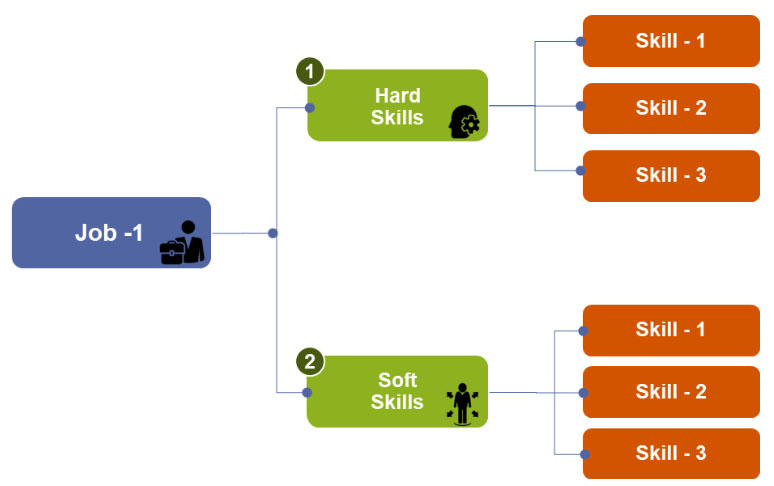Vigneshkumar Dhandapani, Consultant at Avalon Consulting poses his views to Times ascent on how digitalization is going to drive India’s economy in the upcoming years. Technologies such as AI/ML, IoT and robotic process automation is ought to make a substantial number of employees to move from being “listeners” to “decision-makers.

India is expected to be the world’s 3rd largest economy by 2030, in size, just behind the US and China. With a multi-fold rise in the GDP, a trend that is likely to drive the economy is digitalization. With the rapid advent of digitalization, it is anticipated that the mundane activities across sectors will be replaced by technology interventions such as AI/ML, IoT and robotic process automation. All-in-all, substantial number of employees in the future will be expected to move from being “listeners” to “decision-makers”. With such a trend shift, it is anticipated that the workforce would be involved in a continuous upskilling journey, so that the skills needed for becoming “decision makers” are sustainable in this VUCA world. With over 50% of India’s GDP coming through Services, the impact on the Indian workforce is going to be profound. While it is a positive that continuous upgrade to the workforce’s skills would aid in higher productivity and innovation in the economy, there are a few challenges that are coming along and need to be addressed on priority. These are as follows:
Falling lifespan of a professional skill: The baby boomer generation in India specialised in a single skill and went through the whole of their career journeys. However, now, the average “half-life-of-a-skill” has come down from approximately 20-30 years, decades back, to 4 years – meaning a skill flourishes and becomes commonplace in that period. The impact of such a shift has been the anxiety and peer pressure amongst the professionals to keep themselves updated continuously inline with the most talked-about trends.
Upskilling misalignment: For context, Udemy, Coursera and LinkedIn Learning, put together, has a total of 2 Lac + courses as on date. While it gives professionals a wide range of offerings for learning, one of the core downsides has been the urgency and the need to upskill in areas that are diametrically opposite than functionally adjacent – for example, with technology taking the centre-stage over the last 2 years, many professionals from sectors like Oil and Gas, Mining, etc. are leaning towards learning programming languages. While professionals end up acquiring skill-tags, subsequent application creates risks of undesired results and business losses.
Adverse effect on work-life balance: Except most of the large and some mid-sized corporates, majority of the other organizations do not allocate separate L&D budgets. As part of a Global Employer Research by Pearson in 2019, only 42% of the Indian companies had a formal L&D policy. This figure would have changed considering the reskilling requirement triggered by the pandemic but there would be still a lot of ground to cover. With a substantial chunk of professionals not covered through the L&D programmes, they end up spending time outside their professional commitments to pursue upskilling opportunities. Over time, combining this with misaligned courses or trainings, this is expected to cause work-life balance problems and, with limited family and social interactions, could even lead to mental health issues ranging from anxiety to depression.

Businesses can solve these challenges by following 3 simple steps:
Skills Discovery: Every job in an organization needs employees to possess a specific set of skills viz. hard and soft. Hard skills include the technical competencies needed to shoulder the key job responsibilities and Soft Skills include the non-technical competencies that enable the individual to maintain a positive atmosphere at the workplace through communication and collaboration. Organizations need to map these skills effectively. Skill Maps created periodically with the help of cross-functional teams would aid in accurate mapping of the Job vis-à-vis the Skills. One such illustrative template is as follows:

Skills Measurement: Once the skills are mapped, as a next step, organizations need to measure 2 key parameters for every employee against the Job role. These parameters are what we call as knowledge coefficient and implementation coefficient. Knowledge coefficient is defined as the knowledge possessed by an individual relative to a benchmark in pre-defined areas. Whereas implementation coefficient is defined as the relative level of skills’ implementation achieved by an individual relative to a benchmark in various pre-defined areas. For Illustration, let us say, a job role in an organization needs 3 skills – A, B and C. The relative weightages of these skills – A, B, C – to the job role is 50, 30, 20 respectively, on a total of 100. Through judgment, employees can be rated on each of these parameters. For example, an employee is rated for the skills A, B and C, with regards to his knowledge as 40, 20 and 10 respectively. His knowledge coefficient would be calculated as (40+20+10)/100=0.7 (ideal value = 1). Similarly, he is rated for the same skills with regards to on-the-job skills implementation as 30, 10 and 5 respectively. His implementation coefficient would be calculated as (30+10+5)/100=0.45 (ideal value = 1). Now, with these coefficients, it is clear that the employee is not only struggling to implement his knowledge effectively to the job but also needs to improve his knowledge of key skills needed for his job role. Such measurements for all employees can yield valuable insights on areas where each of them would need handholding.
Facilitating Upskilling: With insights obtained through the above method, organizations that have decent L&D budgets can effectively plan trainings and yield best results, as the training outcomes would be aligned, customised and most likely lead to employees becoming more efficient. Ones that do not have L&D budgets can guide the employees towards availing the right set of training programmes or courses from the right platforms or institutions.
This framework repeated periodically over an internally agreed period within the organizations can not only align and upskill employees to the latest needs of their jobs but also keep them motivated. Overall, from a business standpoint, such interventions will improve employees’ productivity, thereby leading to better output and potentially increasing the topline. Organizations that identify these challenges now and resolve them in a structured manner, will stand to gain and not too far in the future!






